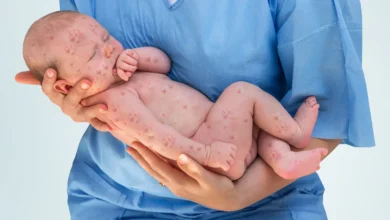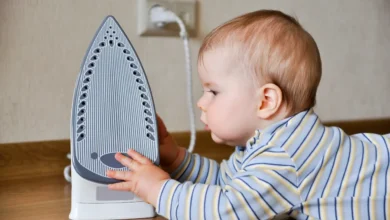Guide to Hand Foot and Mouth Disease
A Family Guide to Hand-Foot-and-Mouth Disease: Symptoms, Care, and Prevention
When your child develops a fever and a rash, it’s natural to feel alarmed. One common cause behind these symptoms in infants and young children is Hand Foot and Mouth Disease (HFMD). While the name might sound alarming, HFMD is usually a mild viral illness. Still, it’s important for families to understand what it is, how it spreads, what to expect, and how to care for a child who has it.
In this guide, we’ll walk you through everything you need to know about HFMD, from its symptoms and stages to tips for prevention and recovery.
What Is Hand Foot and Mouth Disease?
Hand-Foot-and-Mouth Disease is a contagious illness caused primarily by the coxsackievirus A16, though other enteroviruses can also be responsible. It commonly affects infants and children under 5 years old, though older children and even adults can contract it.
The disease gets its name from the distinctive rash and sores that appear on the hands, feet, and inside the mouth, although they can also appear on the buttocks and legs.

How Does HFMD Spread?
HFMD is highly contagious and spreads through:
- Person-to-person contact
- Airborne droplets from coughing or sneezing
- Contact with contaminated surfaces
- Fecal-oral route, such as during diaper changes
Children are especially vulnerable in daycare centres, schools, and other group settings where germs can pass easily from one child to another.
The virus is most contagious during the first week of illness, but can linger in the body for weeks, particularly in the stool.
Signs and Symptoms
The symptoms of HFMD can vary, but here’s a typical timeline and what to look out for:
1. Initial Symptoms (1–2 days)
- Fever (often the first sign)
- Sore throat
- Reduced appetite
- Feeling unwell or lethargic
2. Mouth Sores (after 1–2 days)
- Painful red spots or blisters inside the mouth, particularly on the tongue, gums, and inner cheeks
- Drooling or refusal to eat/drink due to pain
3. Skin Rash (1–2 days later)
- A red, non-itchy rash that may turn into blisters
- Typically appears on the palms of the hands, soles of the feet, and sometimes the buttocks or legs
How Long Does It Last?
HFMD is usually mild and resolves within 7 to 10 days without medical treatment. Most children recover fully, though some may have symptoms that linger slightly longer, like peeling skin on the fingers or toes where blisters were present.
When to See a Doctor
While most cases are manageable at home, seek medical advice if:
- Your child has a high fever lasting more than 3 days
- They’re refusing to eat or drink, risking dehydration
- The rash spreads rapidly or appears infected
- Symptoms worsen or don’t improve after 10 days
- You’re unsure whether it’s HFMD or another condition (such as chickenpox, measles, or a drug reaction)
Home Care: Managing HFMD Symptoms
There’s no specific antiviral treatment for HFMD, so care is focused on relieving symptoms and keeping your child comfortable. Here are some tips:
1. Fever and Pain Relief
- Use acetaminophen (Tylenol) or ibuprofen (Motrin) for fever and pain (avoid aspirin in children)
- Ensure adequate rest and hydration
2. Hydration is Key
- Encourage fluids like water, ice pops, or milk
- Avoid citrus, salty, or spicy foods that can irritate mouth sores
- Offer cool, soft foods such as yogurt, smoothies, or cold soups
3. Comfort for Skin Blisters
- Keep affected areas clean and dry
- Avoid popping blisters—they usually heal on their own
- Trim nails short to prevent scratching and secondary infection
4. Good Hygiene
- Wash hands frequently
- Clean and disinfect toys and common surfaces regularly
- Keep your child home until fever-free and blisters are healing
What About Adults?
Though less common, adults can catch HFMD, especially if they haven’t been exposed before. When adults get it, symptoms may be milder or, in some cases, more severe. Practising good hygiene and minimising contact during your child’s illness can help reduce your risk.
Complications: Rare but Possible
HFMD is usually mild, but in rare cases, complications may arise:
- Dehydration from painful mouth sores and refusal to drink
- Nail shedding (fingernails or toenails may fall off temporarily, weeks later)
- Viral meningitis (a rare but serious complication)
- Encephalitis, a life-threatening brain inflammation, though extremely rare
If your child shows signs of confusion, a stiff neck, or persistent vomiting, seek emergency medical help immediately.

Prevention: Keeping HFMD at Bay
There’s no vaccine for HFMD, so prevention relies on hygiene and awareness:
1. Handwashing
Teach and encourage frequent handwashing, especially:
- After using the bathroom
- After diaper changes
- Before meals
2. Disinfect Surfaces
Clean toys, doorknobs, tabletops, and other frequently touched surfaces especially if someone in your household is sick.
3. Avoid Close Contact
Keep sick children home from daycare or school until:
- They’re fever-free for at least 24 hours
- Mouth sores and blisters are healing
- They feel well enough to participate in normal activities
4. Diaper Hygiene
Dispose of diapers carefully and clean changing areas thoroughly.
Returning to School or Daycare
Children with HFMD can return to school or daycare once they are:
- Fever-free for at least 24 hours
- Feeling well enough to participate in normal activities
- Blisters and sores are healing (they don’t have to be fully gone, just not leaking)
Always check with your school or daycare for their specific policies.
Myths and Misconceptions
Myth 1: Only kids get HFMD
Truth: Adults can get it too, though it’s more common in young children.
Myth 2: It only spreads through coughing and sneezing
Truth: It also spreads through stool, saliva, and contaminated surfaces.
Myth 3: Once you’ve had HFMD, you’re immune for life
Truth: You become immune to the specific strain you had, but other strains can still cause HFMD.
Supporting Your Child Emotionally
Illness can be scary and frustrating for kids. Comfort them with patience, cuddles, and reassurance. Offer age-appropriate explanations, such as:
“Your body is fighting off some germs. That’s why you feel yucky now, but soon you’ll feel better.”
Use distraction tools like books, quiet games, and movies to help pass the time during recovery.

Final Thoughts
Hand-Foot-and-Mouth Disease is a common childhood illness that, while unpleasant, is usually nothing to fear. With good hygiene practices, a watchful eye, and supportive care, most children bounce back quickly and without complications.
As a parent or caregiver, your calm presence, attention to symptoms, and ability to create a soothing home environment can make all the difference in your child’s recovery.
Remember: If you’re ever unsure whether symptoms are from HFMD or something else, don’t hesitate to contact your pediatrician. Trust your instincts, they’re usually right.



